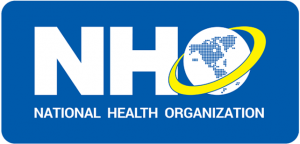By the mid-1990s, forensic accounting had become its own distinct form of accounting. Regulations had placed much of the responsibility for anti-fraud protections in the hands of CPAs, with scandals in the financial world driving many of these new requirements. In India, Chanakya wrote a manuscript similar to a financial management book, during the period of the Mauryan Empire. His book Arthashastra contains few detailed aspects of maintaining books of accounts for a sovereign state.
Instead of recording a transaction when it occurs, the cash method stipulates a transaction should be recorded only when cash has exchanged. Because of the simplified manner of accounting, the cash method is often used by small businesses or entities that are not required to use the accrual method of accounting. By 1880, the modern profession of accounting was fully formed and recognized by the Institute of Chartered Accountants in England and Wales. This institute created many of the systems by which accountants practice today. The formation of the institute occurred in large part due to the Industrial Revolution.
- Much of the reporting of such information is voluntary, especially in the United States.
- The biggest coaching mistake in Jackets history, which is saying something, he was relieved of his duties after a union investigation revealed how deeply he had invaded the privacy of his players.
- At this time the rationality of the working of the accountants was analyzed.
- It may be handled by a bookkeeper or an accountant at a small firm, or by sizable finance departments with dozens of employees at larger companies.
The biggest coaching mistake in Jackets history, which is saying something, he was relieved of his duties after a union investigation revealed how deeply he had invaded the privacy of his players. https://accounting-services.net/ Julia Kagan is a financial/consumer journalist and former senior editor, personal finance, of Investopedia. At the beginning of this century, trade flourished in the Italian port of Genoa.
Uses of an Account History
As early as 1961, transistors were being supplanted by microchips, which eventually led to computers for everyone. The shrinking of the country thanks to the railroads and the introduction of uniformity encouraged investment, which, in turn, put more focus on accounting. People acquired issues of stock in companies with which they were familiar through industry knowledge or acquaintanceships with the owners. Others blindly invested according to the encouragement of relatives and friends. There were no financials to check if you wanted to invest in a corporation or business; thus, the risks involved ensured that investing was only for the wealthy—a rich man’s sport, tantamount to gambling. The railroads also allowed information to be passed from city to city at great speed.
History of Financial Accounting
The first, the accrual basis method of accounting, has been discussed above. These rules are outlined by GAAP and IFRS, are required by public companies, and are mainly used by larger companies. Some accounting software is considered better for small businesses such as QuickBooks, Quicken, FreshBooks, Xero, SlickPie, or Sage 50. Larger companies often have much more complex solutions to integrate with their specific reporting needs. However, Luca Bartolomeo de Pacioli, who was an Italian mathematician and a Franciscan monk, became known as the father of accounting. His 1494 book, The Collected Knowledge of Arithmetic, Geometry, Proportion, and Proportionality, includes a 27-page section about bookkeeping.
Key Takeaways
Accountants help businesses maintain accurate and timely records of their finances. Accountants are responsible for maintaining records of a company’s daily transactions and compiling those transactions into financial statements such as the balance sheet, income statement, and statement of cash flows. Accountants also provide other services, such as performing periodic audits or preparing ad-hoc management reports. In most cases, accountants use generally accepted accounting principles (GAAP) when preparing financial statements in the U.S. GAAP is a set of standards and principles designed to improve the comparability and consistency of financial reporting across industries.
Accounting History
In the United States, for example, publicly traded companies are required to furnish a document commonly identified as “management’s discussion and analysis” as part of the annual report to shareholders. This document summarizes historical performance and includes forward-looking information. The first professional organizations for accountants were established in Scotland in 1854, starting with the Edinburgh Society of Accountants and the Glasgow Institute of Accountants and Actuaries. Members of such organizations could call themselves “chartered accountants.”
Evolution of Financial Accounting Technology
For example, if you have received or transferred ill-gotten funds into a bank account, the transaction will be recorded. If the assets and funds of an organization in the account history do not match the levels reported elsewhere. The Internal Revenue Service (IRS) may review an individual’s account history to investigate possible illegal activities such as tax evasion or money laundering. Many financial crimes are resolved by a thorough analysis of account histories.
Enron became one of the fastest-growing U.S. companies in the 1990s — thanks in large part to hidden debt and bad assets. The company collapsed following a thorough review of financial statements that uncovered fraud. Accounting’s earliest days may have come 12,000 years ago, when people likely traded resources while primarily surviving by hunting animals and gathering fruit. By comparison, accounting today involves various electronic processes and is responsible for billions of dollars in sales. The Business Research Company reports that the market size of the global accounting services industry was nearly $588 billion in 2021 and projects that it will increase to $1.7 trillion by 2031. It was in this environment that a close friend of Leonardo da Vinci, the itinerant tutor, Luca Pacioli published a book not in Greek or Latin, but in a language that merchants understood well — Italian vernacular.
In the simplest form, this meant creating a balance sheet with separate debits and credits. This innovation made bookkeeping more efficient and provided a clearer picture of a company’s overall strength. As part of the tradition of learned monks conducting high-level scientific and philosophical research in the 15th century, Italian monk Luca Pacioli revamped the common bookkeeping structure and laid the groundwork for modern accounting. Pacioli, who is commonly known as “the father of accounting,” published a textbook called “Summa de Arithmetica, Geometria, Proportioni et Proportionalita” in 1494, which showed the benefits of a double-entry system for bookkeeping.
Pacioli received an abbaco education, i.e., education in the vernacular rather than Latin and focused on the knowledge required of merchants. Pacioli’s book explained the Hindu-Arabic numerals, new developments in mathematics, and the system of double-entry was popular with the increasingly influential merchant class. In contrast to scholarly abstracts in Latin, accounting history Pacioli’s vernacular text was accessible to the common man, and addressed the needs of businessmen and merchants.[22] His book remained in print for nearly 400 years. To accountants, the two most important characteristics of useful information are relevance and reliability. Information is relevant to the extent that it can potentially alter a decision.
The earliest days of the history of accounting likely included forms of forensic accounting. Historians believe Egyptians monitored for fraud by tracking their kingdom’s possessions. The recognition of accounting as a profession occurred with the first organizations focused on the career.


